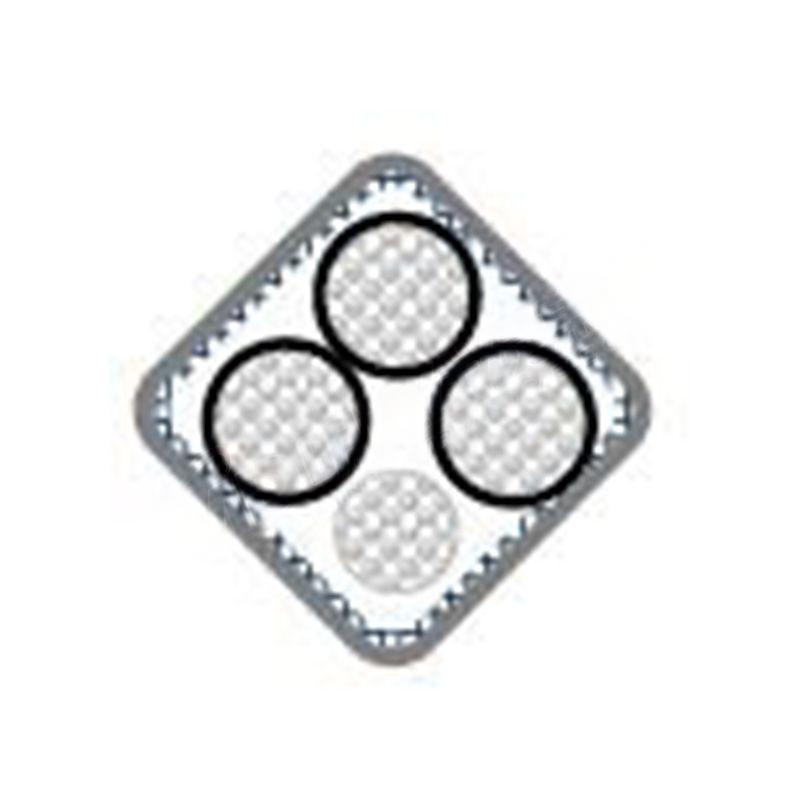10 月 . 05, 2024 05:52 Back to list
lugged butterfly valve
Understanding Lugged Butterfly Valves A Comprehensive Overview
Lugged butterfly valves are a crucial component in various industrial applications, primarily used for regulating the flow of fluids in piping systems. Their design and functionality offer a reliable and efficient solution for controlling the movement of liquids and gases in multiple environments, including water supply, chemical processing, and HVAC systems. This article aims to explore the features, benefits, applications, and maintenance of lugged butterfly valves, providing a detailed understanding of this essential type of valve.
What is a Lugged Butterfly Valve?
A lugged butterfly valve is a type of quarter-turn valve that consists of a circular disc or plate (the butterfly) mounted on a shaft. The disc pivots around the shaft's centerline to either allow or restrict fluid flow. The term lugged refers to special lugs or tabs that are integral to the valve body, allowing it to be bolted directly to the flanges of the piping system. This design enables the valve to be installed without the need for additional supports, making it a versatile choice in many installations.
Key Features
Lugged butterfly valves are characterized by several key features
1. Compact Design Their compact nature allows for easy installation in tight spaces, making them advantageous in industrial settings where space is limited.
2. Lightweight Compared to other valve types, lugged butterfly valves are lightweight, reducing the overall weight on piping systems and making handling easier during installation and maintenance.
3. Versatile Materials These valves can be constructed from various materials such as cast iron, stainless steel, and plastic, which allows for suitability across different industries depending on the nature of the fluid being transported.
4. Sealing Flexibility Depending on the application, lugged butterfly valves can be fitted with different sealing materials, such as EPDM, Viton, or PTFE, to accommodate a diverse range of fluids and temperature conditions.
5. Cost-Effectiveness The manufacturing process for butterfly valves is generally less costly than that of other valve types, making them an economical choice for many applications.
Benefits of Lugged Butterfly Valves
Lugged butterfly valves offer several benefits that enhance their appeal
1. Efficient Flow Control The design facilitates quick operation, allowing for effective modulation of flow with minimal pressure drop when fully open.
lugged butterfly valve

2. Reduced Maintenance Requirements These valves have fewer moving parts than other types of valves, which translates to lower wear and tear, resulting in reduced maintenance needs and costs.
3. Isolation Capabilities When using a pair of lugged butterfly valves, complete isolation of a segment of piping is possible, which is advantageous during system repairs without needing to shut down the entire system.
4. Versatile Applications Their excellent flow characteristics and ability to handle various media make them suitable for multiple applications across diverse industries.
Applications
Lugged butterfly valves find usage in a variety of sectors
- Water Treatment Used for isolating and controlling water in treatment facilities. - Chemical Processing Essential for managing corrosive and non-corrosive fluids in chemical plants. - HVAC Systems Commonly employed for regulating airflow and maintaining pressure in heating and cooling systems. - Food and Beverage Industry Designed to meet hygiene standards while controlling flow in food processing applications.
Maintenance Practices
To ensure optimal performance and longevity, regular maintenance of lugged butterfly valves is essential. Key practices include
1. Visual Inspections Regularly check the valve and surrounding piping for signs of leaks, wear, or corrosion.
2. Lubrication Ensure that the valve shaft and operating mechanism are adequately lubricated to prevent sticking and enhance longevity.
3. Cleaning Remove any build-up of debris or deposits that could hinder valve operation.
4. Testing Periodically test the valve's function by cycling it through its range to ensure it opens and closes smoothly without resistance.
Conclusion
In conclusion, lugged butterfly valves represent a practical and efficient solution for fluid flow regulation across many industries. Their unique design, combined with their operational benefits, makes them a favored choice for engineers and system designers. By understanding their features, applications, and maintenance requirements, professionals can harness the full potential of lugged butterfly valves, ultimately contributing to enhanced efficiency and reliability in fluid handling systems.
Share
-
Understanding the Differences Between Wafer Type Butterfly Valve and Lugged Butterfly ValveNewsOct.25,2024
-
The Efficiency of Wafer Type Butterfly Valve and Lugged Butterfly ValveNewsOct.25,2024
-
The Ultimate Guide to Industrial Swing Check Valve: Performance, Installation, and MaintenanceNewsOct.25,2024
-
Superior Performance with Industrial Swing Check Valve: The Essential Valve for Any SystemNewsOct.25,2024
-
Industrial Swing Check Valve: The Ideal Solution for Flow ControlNewsOct.25,2024
-
You Need to Know About Industrial Swing Check Valve: Functionality, Scope, and PerformanceNewsOct.25,2024